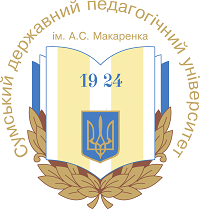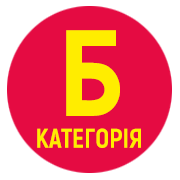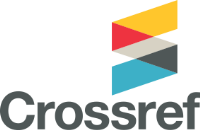USING UKRAINIAN EXERCISE EQUIPMENT ALFA GRAVITY TO HARMONISE PHYSICAL AND MENTAL HEALTH
DOI:
https://doi.org/10.32782/olimpspu/2025.1.15Keywords:
Alfa Gravity, psycho-emotional recovery, body intelligence, corrective pedagogy, special education, individual approach, interdisciplinary analysisAbstract
In recent years, there has been a significant increase in interest among practitioners of adaptive physical education towards innovative training devices that not only enhance physical fitness but also restore mental health and stimulate cognitive functions.A prominent representative of such methodologies is the Ukrainian training device, Alfa Gravity. This unique method combines a body- oriented approach, psychosomatics, therapeutic physical education, and physical rehabilitation, allowing users to effectively train their muscles, improve coordination, and enhance overall endurance.The article explores the features of Alfa Gravity, its advantages, and its impact on health, providing practical recommendations for utilizing the method, particularly in working with children with special educational needs. Alfa Gravity has been found to be highly effective in harmonizing physical and mental health, particularly in its positive effects on physical and emotional states, posture improvement, muscle elasticity, and psychosocial recovery. Additionally, Alfa Gravity strengthens the cardiovascular system and increases endurance and flexibility, making it a valuable tool in rehabilitation and adaptation programs, especially for children with special educational needs. Overcoming physical limitations not only improves health but also fosters socialization, regardless of age or gender.Creating a supportive environment and utilizing innovative methods like Alfa Gravity is crucial for encouraging activity and development in children, which in turn contributes to their holistic growth. For children with special educational needs, the benefits of Alfa Gravity include enhanced innervation, restoration of the mind-body connection, strengthening of neural pathways, stimulation of fine motor skills, assistance in sensory integration, promotion of better cognitive development, and support in becoming more independent.In conclusion, the Alfa Gravity training method represents a significant advancement in adaptive physical education, offering a comprehensive approach to improving both physical and mental health. Its application can lead to profound benefits for individuals, particularly children with special needs, by fostering their development and enhancing their quality of life.
References
Колишкін О.В. Адаптивна фізична культура як важлива галузь соціальної практики. Inclusion and Diversity. 2023. Вип. 1. С. 28-32. https://doi.org/10.32782/inclusion/2023.1.6.
Ломинога С.І., Журбенко Н.М. Застосування програми фізичної реабілітації при захворюваннях опорно-рухового апарату у дітей та підлітків на прикладі спортивно-оздоровчого клубу «Патріот» у місті Вінниці. Здоров’я людини в сучасному культурно-освітньому просторі. 2018. С. 142-145. https://repository.sspu.edu.ua/ handle/123456789/5778
Лядський І.К. (2024) Соціально-емоційне навчання та тілесний інтелект. Психологія і соціальна робота у ХХІ столітті: зб. наук. матеріалів ІІ Міжнарод. наук.-практ. форуму. м. Полтава. С. 350-352.
Молодова О.Ю. (2024) Ментальне здоров'я та тілесна усвідомленість. Психологія і соціальна робота у ХХІ столітті: зб. наук. матеріалів ІІ Міжнарод. наук.-практ. форуму. м. Полтава. С. 364-367.
Фролов Я.М., Тесленко А.О., Юденко О.В., Крушинська Н.М. Суглобова гімнастика – ефективна складова комплексних програм фізкультурно-спортивної реабілітації учасників АТО. Теоретико-методичні аспекти фізичної культури і спорту. 2020. С. 96–108. https://previous.scientia.report/index.php/archive/article/view/1767
Фурман Є.М. Формування мотивації до занять фізичною культурою засобами “Альфа Гравіті”. Кваліфікаційна робота магістра спеціальності 017 "Фізична культура і спорт". Наук. керівник В.Г. Бабій. Запоріжжя: ЗНУ, 2020. 66 с. https://dspace.znu.edu.ua/jspui/handle/12345/1796
Cutts B. B., Darby K. J., Boone C. G., and Brewis A. (2009) City structure, obesity, and environmental justice: an integrated analysis of physical and social barriers to walkable streets and park access, Social Science & Medicine. Vol. 69. № 9. 1314–1322, https://doi.org/10.1016/j.socscimed.2009.08.020.
Kolyshkin O.V. (2024) Development of the motor sphere of children with intellectual disabilities with the participation of families. Inclusion and Diversity. Vol. 4. P. 19-23. https://doi.org/10.32782/inclusion/2024.4.4
MacEachern, S., Forkert, N. D., Lemay, J. F., & Dewey, D. (2021). Physical Activity Participation and Barriers for Children and Adolescents with Disabilities. International Journal of Disability, Development and Education, 69(1), 204–216. https://doi.org/10.1080/1034912X.2021.1952939
McCarthy N., Hall A., Shoesmith A., Sutherland R., Hodder R., Campbell E., Nathan N. (2021) Australian children are not meeting recommended physical activity levels at school: Analysis of objectively measured physical activity data from a cross sectional study. Preventive Medicine Reports. Vol. 23. https://doi.org/10.1016/j.pmedr.2021.101418.
Palaščáková D., Liadskyi I., Senko I. Gender aspects of social intelligence management in the context of entrepreneurial and civic engagement. Journal of Women's Entrepreneurship and Education. 2023. P. 92-108. https://doi. org/10.28934/jwee23.pp92-108
Shields N. and Synnot A. (2016) Perceived barriers and facilitators to participation in physical activity for children with disability: a qualitative study, BMC Pediatrics. Vol. 16, № 1, https://doi.org/10.1186/s12887-016-0544-7.
Shuttleworth, H., Hickey, L., & Toovey, R. (2023). Pathways to participation in gymnastics for children with disability. Disability and Rehabilitation, 46(11), 2365–2373. https://doi.org/10.1080/09638288.2023.2221460
Wijayanti, D. G. S., Yuwono, C., Rizqanada, A., Berlianti, D., Tadita, A. D., Pamungkas, D. B. A., & Ngatinah, N. (2024). Cultivating Movement for Students with Special Needs Through Creative Gymnastics to Maintain Physical Fitness. Jurnal Abdimas, 28(2), 168–171. https://doi.org/10.15294/s9jwqk77
Xu C, Yao M, Kang M, Duan G. (2020) Improving physicalfitness of children with intellectual and developmentaldisabilities through an adapted rhythmic gymnasticsprogram in China. BioMed Research International. https://doi.org/10.1155/2020/2345607







